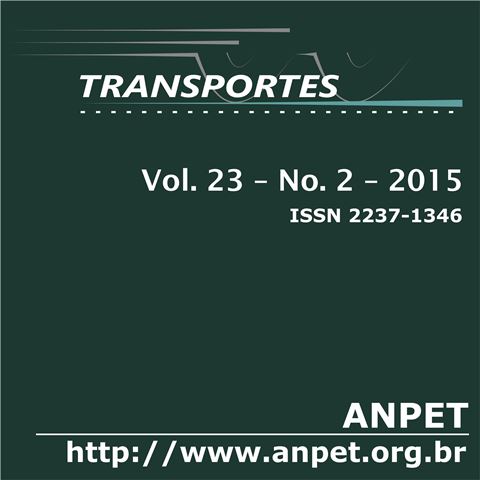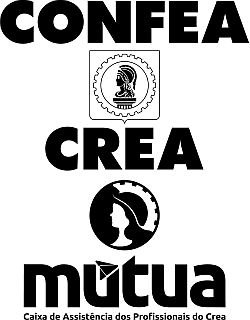Análise dos benefícios da utilização de procedimentos baseados em desempenho e da utilização de aproximações de descida contínua na rota Galeão-Guarulhos
DOI:
https://doi.org/10.14295/transportes.v23i2.862Palavras-chave:
PBN, CDA, TAAM, Desempenho, Performance-Based Navigation.Resumo
A introdução dos procedimentos PBN (Performance-Based Navigation) representa a busca pela otimização e melhor utilização do espaço aéreo e a sua implantação é considerada fundamental para os programas de modernização da navegação aérea em andamento em vários países, inclusive no Brasil. A implantação desse novo tipo de procedimento intro-duziu mudanças na operação das aeronaves, na inserção de novos procedimentos para controladores e pilotos e na introdução de sistemas de automação para suporte das operações aéreas e no solo. O objetivo desse artigo é analisar os benefícios da realização de Procedimentos de Navegação Baseados em Desempenho (PBN) e da utilização de Aproximações de Descida Contínua (CDA) na rota Galeão-Guarulhos. O estudo aplicou a simulação em tempo acelerado (fast-time) com o (Total Airspace and Airport Modeler) (TAAM) e considerou nove modelos diferentes de aeronaves. Utilizou como parâmetro de desempenho o combustível consumido. Os resultados do estudo mostraram que os benefícios da aplicação dessas técnicas variam conforme o modelo de aeronave.
Downloads
Referências
ANAC - Agência Nacional de Aviação Civil. Anuário Estatístico do Transporte Aéreo (2013). Dados Estatísticos e Econômicos de 2012. Brasília.
Banks, J. Handbook of simulation. Wiley Online Library, 1998. dx.doi.org/10.1002/9780470172445
Chandra, D. C.; Grayhem, R.; Butchibabu, A. Area Navigation and Required Navigation Performance Procedures and Depic-tions. Volpe Institute. 2012.
DECEA – Departamento de Controle do Espaço Aéreo (2013). Cartas de procedimento de voo por instrumento. Brasil.
ICAO- International Civil Aviation Organization (2013). Doc 9613. Performance-Based Navigation (PBN) Manual. 4th Edi-tion. Quebec, Canada.
ICAO- International Civil Aviation Organization (2010). Doc 9931.Continuous Descent Operation (CDO). 1th Edition. Que-bec, Canada
ICAO. International Civil Aviation Organization (2006). Doc 8168. Procedures for Air Navigation Services, Aircraft Opera-tions, PANS-OPS, Volume II, Construction of Visual and Instru-ment Flight Procedures. 5th Edition. Quebec, Canada.
Muller, D.; Uday, P.; Marais, K. B. (2011). Evaluation of the po-tential environmental benefits of RNAV/RNP arrival procedures. 11th AIAA ATIO conference Virginia. dx.doi.org/10.2514/6.2011-6932
Nolan, M. S (2010). Fundamentals of air traffic control. Cen-gage Learning.
Pidd, M. (1994). An introduction to computer simulation. Pro-ceedings of the 26th conference on Winter simulation. dx.doi.org/10.1109/WSC.1994.717064
Sprong, K. R. (2005). Measuring the effects of RNAV departure procedures on airport efficiency. Digital Avionics Systems Con-ference. dx.doi.org/10.1109/DASC.2005.1563329
Sprong, K. R. et al. (2005) Improving flight efficiency through terminal area RNAV. 6th USA/Europe Air Traffic Management R&D Seminar.
Sprong, K. R.; Mayer, R. H. (2007). Analysis of RNAV arrival operations with descend via clearances at Phoenix Airport. 26th IEEE/AIAA Digital Avionics Systems Conference. dx.doi.org/10.1109/dasc.2007.4391874
White JR, K. P.; Ingalls, R. G. (2009). Introduction to simu lation. Winter Simulation Conference. dx.doi.org/10.1109/wsc.2009.5429315
Downloads
Publicado
Como Citar
Edição
Seção
Licença
Ao submeter um manuscrito para publicação neste periódico, todos os seus autores concordam, antecipada e irrestritamente, com os seguintes termos:
- Os autores mantém os direitos autorais e concedem à Transportes o direito de primeira publicação do manuscrito, sem nenhum ônus financeiro, e abrem mão de qualquer outra remuneração pela sua publicação pela ANPET.
- Ao ser publicado pela Transportes, o manuscrito fica automaticamente licenciado sob a Licença Creative Commons CC BY 4.0. Esta licença permite o seu compartilhamento com reconhecimento da autoria e da publicação inicial neste periódico.
- Os autores têm autorização para assumir contratos adicionais separadamente, para distribuição não exclusiva da versão do trabalho publicada neste periódico (por ex.: publicar em repositório institucional ou como capítulo de livro), com reconhecimento da publicação inicial na Transportes, desde que tal contrato não implique num endosso do conteúdo do manuscrito ou do novo veículo pela ANPET.
- Os autores têm permissão e são estimulados a publicar e distribuir seu manuscrito online (por ex.: em repositórios institucionais ou na sua página pessoal) depois de concluído o processo editorial. Como a Transportes é de acesso livre, os autores são estimulados a usar links para o DOI do artigo nesses casos.
- Os autores garantem que obtiveram todas as permissões necessárias dos empregadores para a publicação e o licenciamento CC BY 4.0 do manuscrito, especialmente se o empregador possuir alguma reivindicação sobre os direitos autorais do manuscrito. Os autores assumem total responsabilidade por questões de direitos autorais relacionadas ao empregador, isentando a ANPET e a Transportes de qualquer responsabilidade relacionada.
- Os autores assumem toda responsabilidade sobre o conteúdo do manuscrito, incluindo as devidas e necessárias autorizações para divulgação de dados coletados e resultados obtidos, isentando a ANPET e a Transportes de toda e qualquer responsabilidade neste sentido.
Última atualização: 27/11/2025











